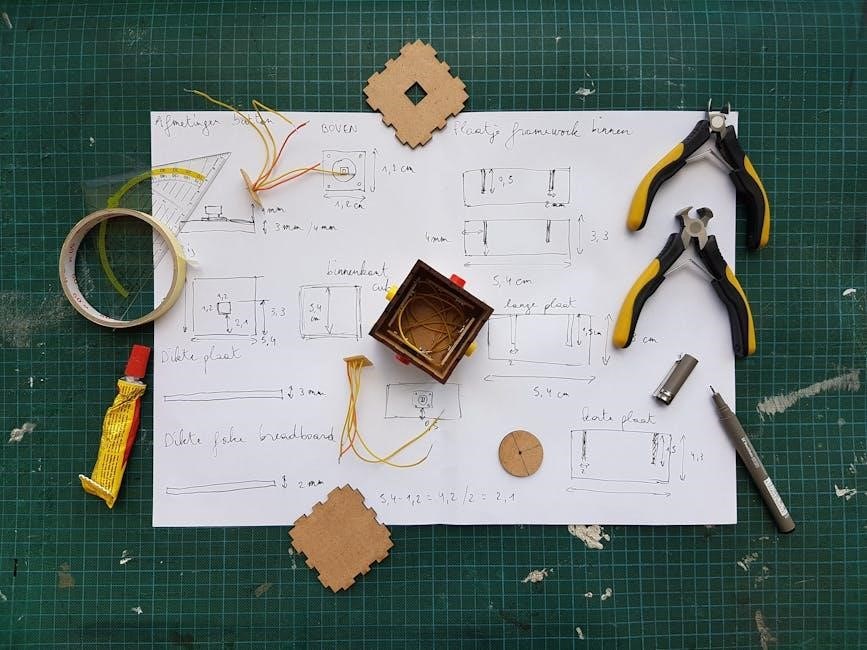Jane’s Chicken Burgers⁚ Cooking Methods
Jane’s chicken burgers offer versatile cooking options. Oven baking at 425°F (218°C) for 18 minutes (flipping halfway) ensures even cooking. Skillet cooking over medium heat for about 10 minutes, flipping frequently, yields delicious results. Grilling on medium-high heat for 15 minutes, turning occasionally, creates a delightful char.
Oven Baking Instructions
For perfectly baked Jane’s chicken burgers, preheat your oven to 425°F (218°C). This temperature ensures a crispy exterior while maintaining a juicy interior. Arrange the frozen burgers on a baking sheet lined with parchment paper or a silicone baking mat. This prevents sticking and makes cleanup a breeze. Bake for approximately 10 minutes, then carefully flip each burger using a spatula. Continue baking for another 8 minutes, or until the internal temperature reaches 165°F (74°C). A food thermometer is recommended to ensure the burgers are thoroughly cooked. Avoid overcrowding the baking sheet; ensure adequate space between burgers for even heat distribution. Once cooked, remove the burgers from the oven and let them rest for a couple of minutes before serving on buns with your favorite toppings. Enjoy your perfectly baked, delicious Jane’s chicken burgers!
Skillet Cooking Instructions
Achieve perfectly cooked Jane’s chicken burgers using a skillet. Begin by preheating your skillet over medium heat. For best results, use a non-stick skillet or lightly grease a regular skillet with 1 teaspoon of oil to prevent sticking. Place the frozen chicken burgers into the preheated skillet; Cook for approximately 5 minutes per side, or until golden brown and heated through. It’s crucial to cook the burgers until they reach an internal temperature of 165°F (74°C) for food safety. Use a meat thermometer to check the internal temperature. During cooking, occasionally turn the burgers to ensure even browning and prevent burning. Avoid overcrowding the skillet; cook the burgers in batches if necessary. Once cooked, remove the burgers from the skillet and allow them to rest briefly before serving. Serve on buns with your favorite condiments and toppings for a satisfying meal. Remember to adjust cooking time based on your skillet and stovetop.
Grilling Instructions
For a delicious grilled Jane’s chicken burger, start by preheating your grill to medium-high heat. Ensure the grates are clean to prevent sticking. Once the grill is hot, carefully place the frozen chicken burgers directly onto the grill grates. Grill for approximately 7-8 minutes per side, or until the burgers are heated through and nicely browned. To ensure even cooking and prevent burning, use tongs to gently flip the burgers halfway through the cooking process. Use a meat thermometer to verify that the internal temperature of the burgers reaches a safe 165°F (74°C). Grilling time may vary depending on the thickness of the burgers and the heat of your grill. For extra flavor, consider adding your favorite grilling seasonings or marinades before placing the burgers on the grill. Once cooked, remove the burgers from the grill and let them rest for a minute or two before serving. Serve on buns with your preferred toppings for a flavorful and satisfying meal. Enjoy your perfectly grilled Jane’s chicken burgers!
Jane’s Chicken Burger Varieties
Jane’s offers a selection of chicken burgers to suit your needs. Choose from fully cooked, ready-to-heat options or uncooked patties for customized cooking. Both varieties provide delicious, convenient meal solutions.
Frozen, Fully Cooked Burgers
Jane’s frozen, fully cooked chicken burgers offer unparalleled convenience. These burgers are pre-cooked to perfection, requiring only minimal heating before serving. Their ready-to-eat nature makes them ideal for quick meals or busy lifestyles. Simply heat and enjoy! For oven baking, preheat your oven to 425°F (218°C). Place the frozen burger on a baking sheet and bake for approximately 10 minutes, flipping halfway through for even heating. For skillet cooking, heat a lightly oiled nonstick skillet over medium heat. Cook the frozen burger for about 10 minutes, turning occasionally until heated through. Grilling offers a flavorful alternative; preheat your grill to medium-high heat. Place the frozen burger on the grill and cook for approximately 15 minutes, turning occasionally to prevent burning and ensure even cooking. Remember to always check the internal temperature reaches a safe 165°F (74°C) before consuming.
Frozen, Uncooked Burgers
Jane’s frozen, uncooked chicken burgers provide a delicious, customizable meal option. These burgers require thorough cooking before consumption to ensure food safety and optimal flavor. For oven baking, preheat your oven to 400°F (200°C). Place the frozen burgers on a baking sheet and bake for 15-20 minutes, flipping halfway through, until the internal temperature reaches 165°F (74°C). Using a skillet, heat a lightly oiled nonstick skillet over medium heat. Cook the frozen burgers for approximately 10-12 minutes per side, ensuring they are cooked thoroughly. For grilling, preheat your grill to medium heat. Place the frozen burgers on the grill and cook for 12-15 minutes, turning frequently, until the internal temperature reaches 165°F (74°C). Remember, cooking times may vary depending on the thickness of the burger and your appliance’s heat output. Always use a food thermometer to guarantee the burgers are cooked to a safe internal temperature. Enjoy your perfectly cooked Jane’s chicken burgers!
Cooking Times and Temperatures
Cooking times and temperatures for Jane’s chicken burgers vary depending on the cooking method and whether the burgers are pre-cooked or uncooked. Always check the package for specific instructions and use a food thermometer to ensure food safety.
Oven Baking Time and Temperature
For optimal results when oven baking Jane’s chicken burgers, preheat your oven to 425°F (218°C). This temperature ensures the burgers cook thoroughly while maintaining their juicy texture. Arrange the frozen burgers on a baking sheet lined with parchment paper or a silicone baking mat to prevent sticking. This allows for even heat distribution and prevents burning. Baking time will vary depending on the type of burger (fully cooked or uncooked) and thickness. For frozen, fully cooked burgers, aim for approximately 10-12 minutes, flipping halfway through. This reheats the burger to a safe internal temperature while maintaining its original texture. For frozen, uncooked burgers, expect a longer cooking time of around 18-20 minutes, again flipping halfway, to ensure the internal temperature reaches a safe 165°F (74°C). Always use a food thermometer to verify the internal temperature. Avoid overcrowding the baking sheet, allowing for adequate space between each burger for even cooking. Once cooked, carefully remove the burgers from the oven and let them rest for a few minutes before serving. Enjoy your perfectly baked Jane’s chicken burgers!
Skillet Cooking Time and Temperature
Cooking Jane’s chicken burgers in a skillet offers a quick and convenient method. Begin by preheating your skillet over medium heat. For optimal results, use a non-stick skillet or lightly oil it with about 1 teaspoon of oil to prevent sticking. This will help ensure even cooking and browning. Place the frozen burgers into the preheated skillet. For frozen, fully cooked burgers, cook for approximately 8-10 minutes, frequently turning the burgers to ensure they are heated through and browned evenly on both sides. Use a spatula to gently flip the burgers. For frozen, uncooked burgers, increase the cooking time to 12-15 minutes, again flipping frequently. Monitor the internal temperature with a food thermometer to ensure it reaches a safe 165°F (74°C). Adjust the heat as needed to maintain consistent cooking and prevent burning. Once cooked, remove the burgers from the skillet and let them rest for a couple of minutes before serving on your favorite buns with your desired toppings. The skillet method provides a delicious, crispy exterior while maintaining a juicy interior.
Grilling Time and Temperature
Grilling Jane’s chicken burgers adds a smoky flavor and delightful char. Prepare your grill for medium-direct heat. This ensures even cooking and prevents burning. For optimal results, preheat your grill to medium-high heat for approximately 10-15 minutes before placing the burgers on the grill grates. For frozen, fully cooked burgers, grill for approximately 8-10 minutes per side, flipping carefully with a spatula to avoid breaking them. Ensure the burgers reach an internal temperature of 165°F (74°C) for food safety. For frozen, uncooked patties, increase the grilling time to about 12-15 minutes per side, ensuring they are thoroughly cooked through. Remember to frequently monitor the internal temperature using a food thermometer. Adjust the heat as needed to prevent burning or uneven cooking. The grilling process enhances the flavor profile of the burgers, creating a delicious outdoor meal. Once cooked, remove the burgers from the grill and let them rest for a couple of minutes before serving. Enjoy your perfectly grilled Jane’s chicken burgers!




